The idea behind RideAir was dreamed up in March of 2015, with a rough prototype built for feasibility testing just one month later. Since then, the RideAir product has gone from strength to strength, from successful funding of its Kickstarter campaign in June of 2015, to the first production run just two years later in March of 2017.
Simply put, the RideAir system is a rechargeable, portable inflation device that can be filled with air from a bicycle floor pump or compressor.
The designers of RideAir claim it can be used to seat tubeless tyres, and can do away with wasteful CO2 cartridges in the instance of a puncture.
RideAir supports Schrader, Dunlop and Presta valves. Its air tank can be filled to 230psi.
The RideAir system, or air tank if you prefer, is simple to operate. Pop open the lid, attach your floor pump or compressor chuck to the valve and inflate to the desired pressure.
The pressured air tank of the RideAir is designed to retain pressure even when it’s stashed away in storage for a decent amount of time.
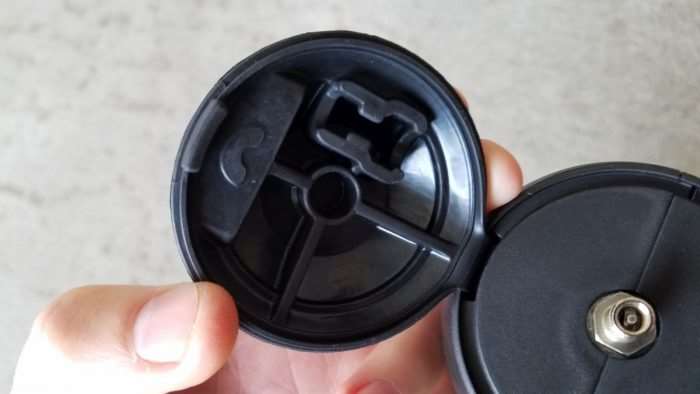
A button on the side of the RideAir controls the release of air from inside of the tank. Holding the button down for a few seconds will completely empty the tank (useful for mounting a tubeless tyre), whereas air can be released in controlled bursts if one regulates how the button is pressed.
The RideAir’s inflator hose that controls the flow of all that oxygen stores neatly into a recessed slot on the RideAir’s body.
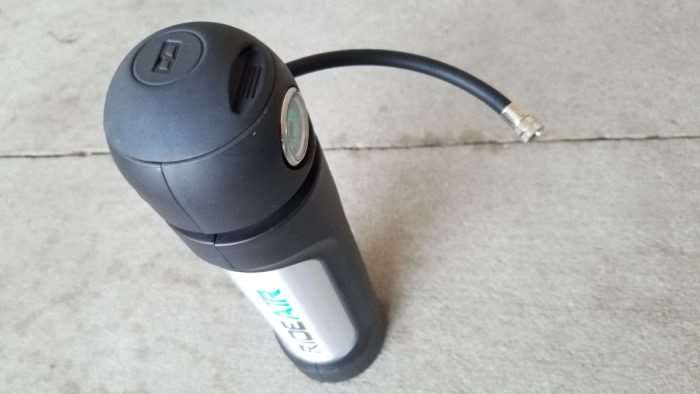
The RideAir is designed to be transportable, and with a completely full canister, could inflate at least two road tyres. The caveat with the above statement; I don’t envisage too many pavement-going roadies carrying the RideAir on their road bikes.
As it is, the RideAir doesn’t fit well into a King Titanium cage, which is a relatively traditional bottle cage design.
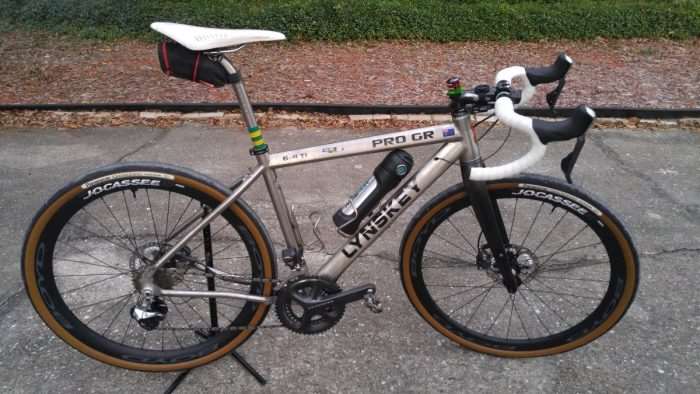
That lack of fit in a traditional bottle cage design is better illustrated in the photo above. However, in RideAir’s defense, they do offer a “RideAir Holder”, which essentially is a bottle cage optimized to hold the RideAir canister in a secure manner
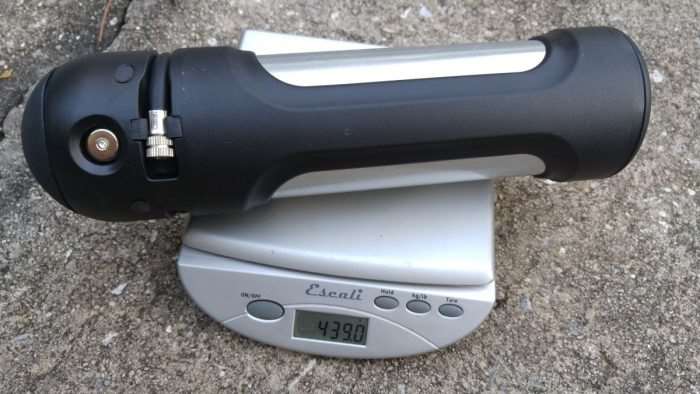
Roadie interest in this product aside, I can see the RideAir being very useful on a commuter bike, or bike packing or gravel rig, especially if your gravel bike possesses a third bottle cage mount. For an MTB, it could work even better, especially if you’re the type of rider who eschews bottles altogether in favor of a hydration pack.
Inflation and Tubeless Test
Inflation is a snap. Simply attach your pump’s chuck to the RideAir’s inlet valve, and begin pumping. 230psi is the recommended maximum, but I play it safe at 200psi.
Pictured above, the gauge of my Topeak Joe Blow Booster Pump is reading above its maximum inflation with the RideAir’s tank inflated to 200psi. Just a little bit disconcerting… and 40 pump strokes to fill the tank to 200psi, at least with this pump.
To inflate a wheel from my fleet, I had to use a Schrader -> Presta adapter. One is shipped with RideAir, although my review sample was missing it. Good thing I have a few spares laying around the house.
Next, screw the RideAir’s inflation hose to the adapter, press the inflation button, and watch as the tyre fills with air from the cylinder. All very simple.
But the true worth of RideAir is best demonstrated with its ability to inflate tubeless tyres. To do that, I made a short video, which you can watch below. The demonstration features me inflating a freshly mounted Panaracer Gravelking SK tyre in 700c x 40mm with zero air pressure inside its casing.
If you watched the video above, you’ll see the RideAir easily seated and inflated the Gravelking SK tubeless tyre.
But there is one shortcoming of the RideAir relating to tubeless tyre installs. It has to do with inflation of bigger casing tubeless tyres, or those that may be a little tricky to mount / seat / inflate. In these instances, removal of the valve core is necessary.
Unfortunately, the RideAir’s inflator does not screw onto a valve once the core has been removed, and thus, air leaks everywhere if you try to inflate.
The same can be said for valves by companies such as American Classic. In this case, there is no threading towards the bottom of the valve.
Even with the Schrader -> Presta adapter, there isn’t a snug fit. So, without a more appropriate chuck head on the RideAir (which would defeat its portability), you won’t have much luck inflating tyres with the valve core removed. But, it is unlikely RideAir was designed with tricky tyre installs in mind, but I thought it worth mentioning.
Overall, RideAir performs the task it was designed for. Portable inflation and tubeless tyre installation, albeit limited.
RideAir is available now on the company’s online store and is priced at $US 59.99. A second model with built-in lock is available for $US 69.99.


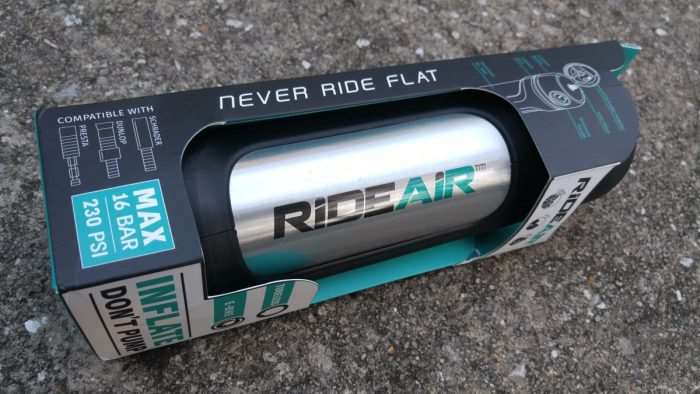
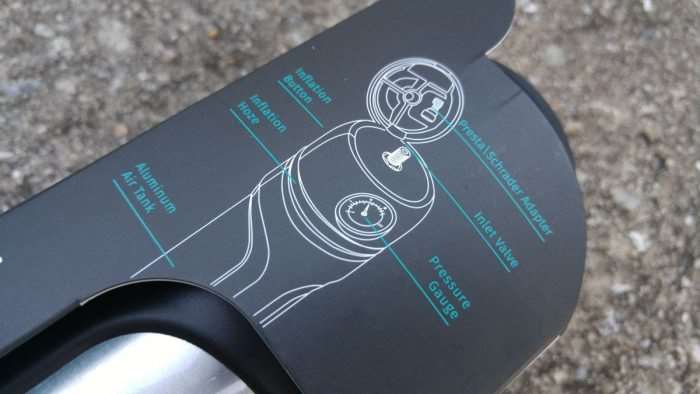
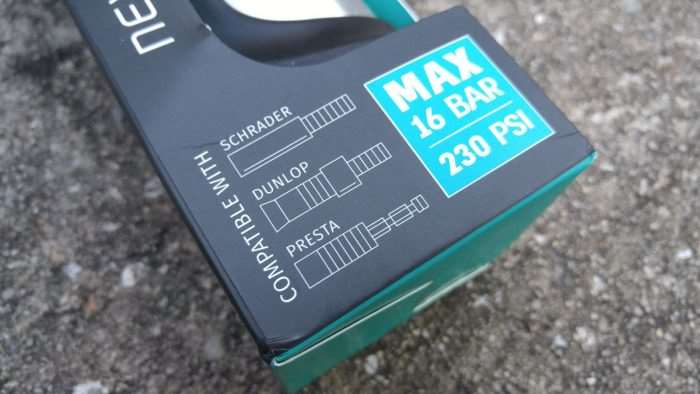
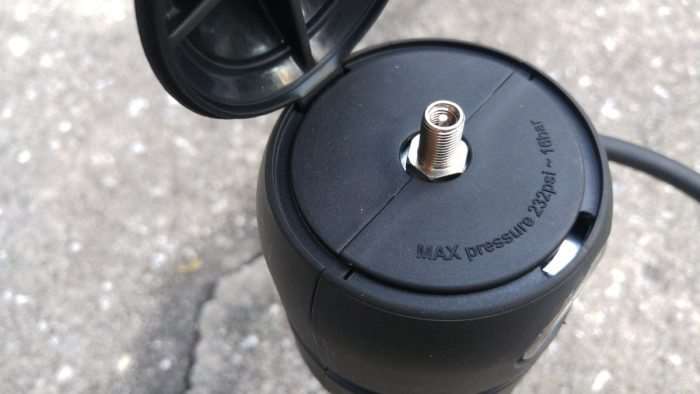
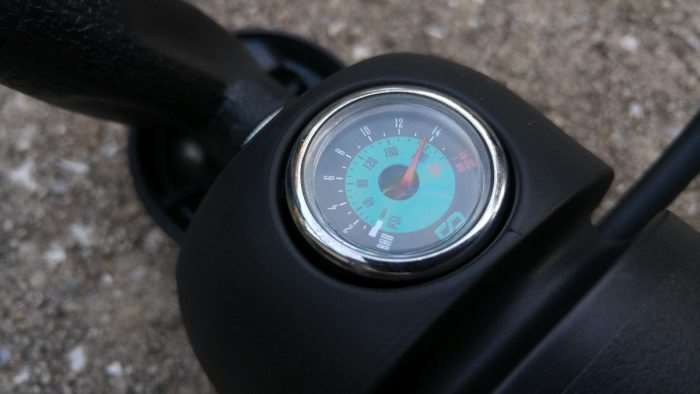
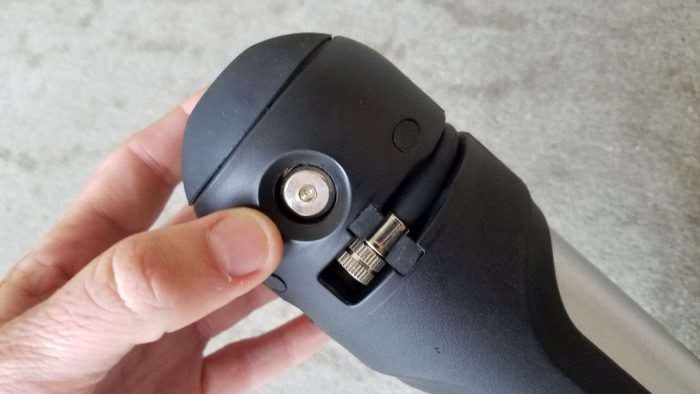
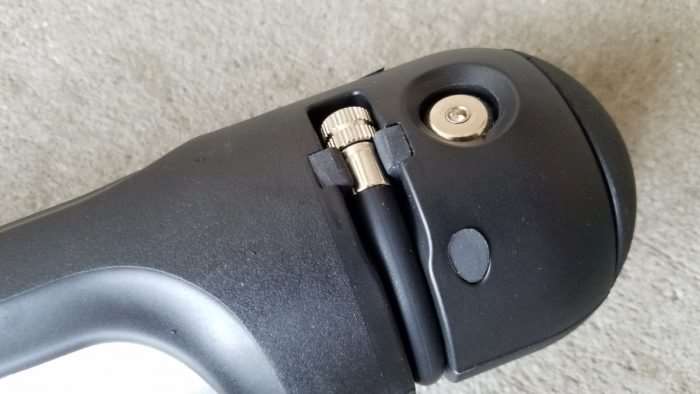
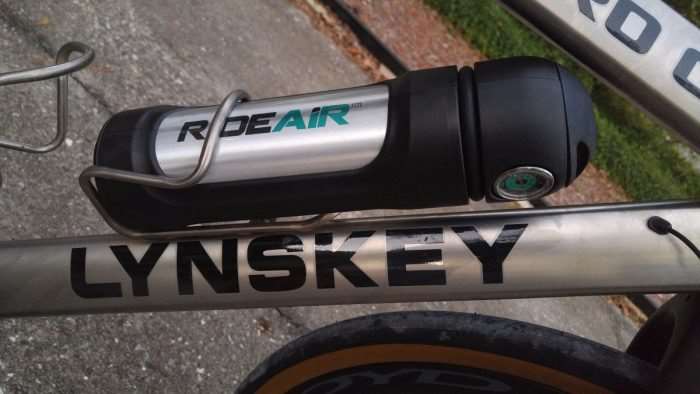
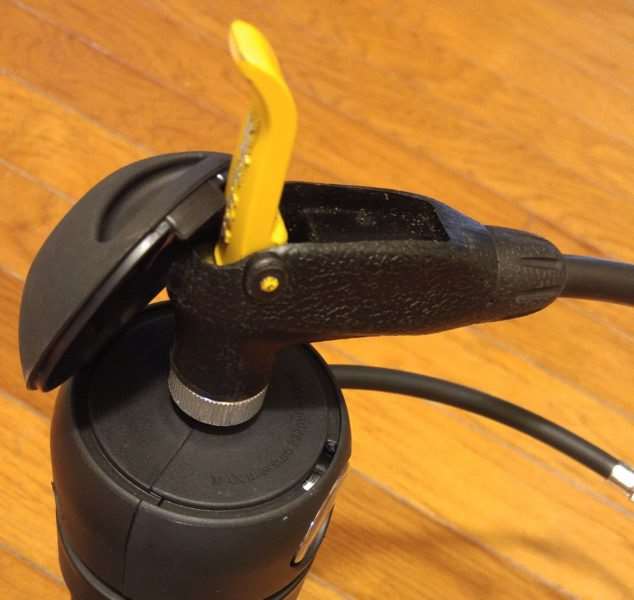
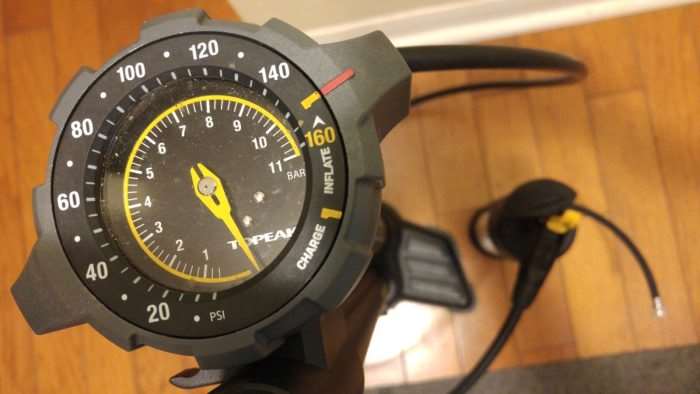
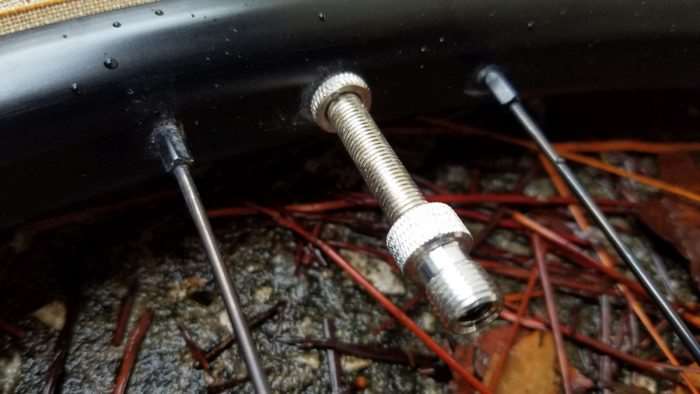
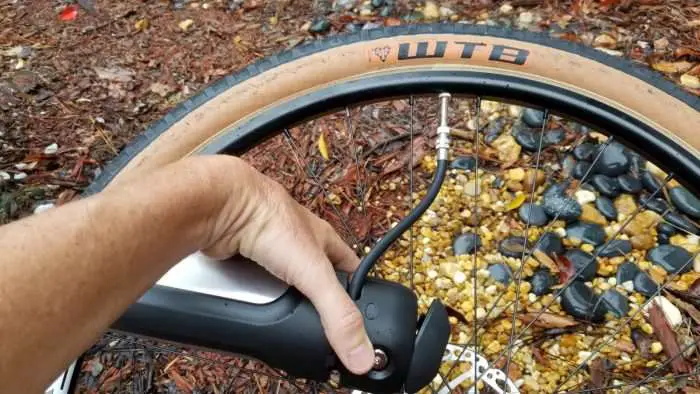
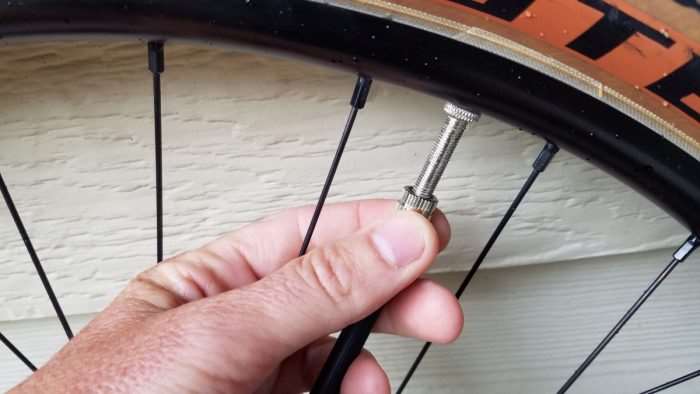
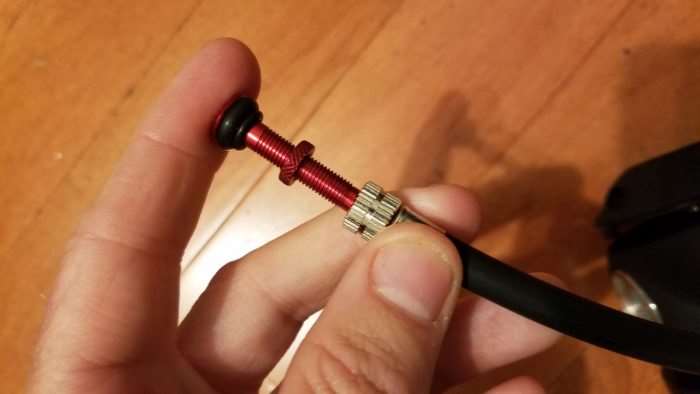
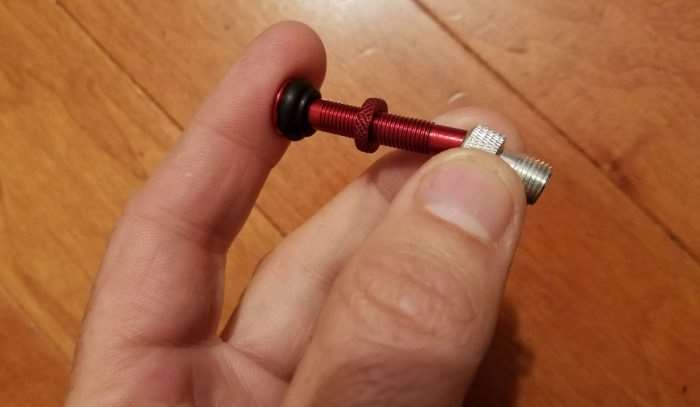
This product makes no sense to me. It seems to have all the disadvantages of a $1 CO2 cartridge (i.e. risky if that is all you have) without any of the advantages of the cartridge (fits in saddle bag, weighs a tiny fraction, doesn’t displace a bottle).
Perhaps the one advantage is seating tubeless tires? But does anyone need to reseat the beads of a tubeless tire on the side of the trail? Either a plug works (or just sealant sealed it) and the beads never had to be unseated off or you unseated the tire because you were putting in a tube.
To be fair I seated G-One Speed tires on DT R460 rims with a Lezyne mini alloy drive pump (after unpacking my bike on travel), so with the right setup seating doesn’t even need much volume.
Yeah, I just don’t get it.
But great review!
Hans, appreciate you writing in. Not a product for everyone, and this isn’t the first of its kind!
I would hate to see one of these eject in front of me in a gravel race!
For seating tubeless I have a Schwalbe Tire Booster which looks similar to this device, but on steroids. Works great for seating tubeless tires and at least 20 bucks cheaper. I use it with my cheap floor pump and carry a Lezyne mini on the bike.